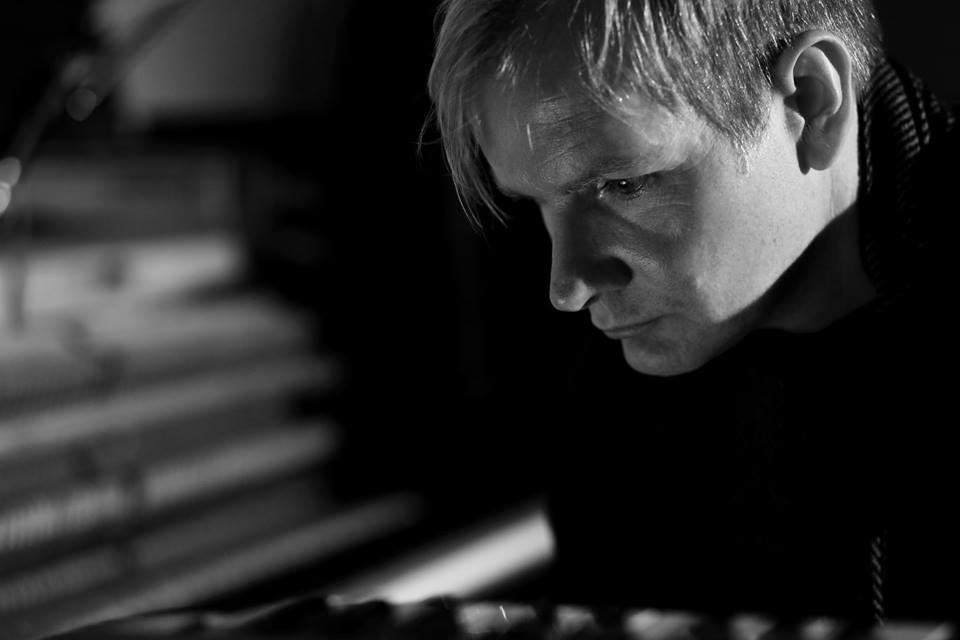Comments
A ghost in the machine – sound collaging 100-year-old cylinder recordings
British composer Adrian Lane talks about how he used 100-year-old cylinder recordings as the starting point for his new album Playing With Ghosts.

Adrian Lane: Yes, I’m a self-taught musician and composer from Essex, England. I’m also a visual artist and produce abstract or semi-abstract paintings. I’ve never formally studied music, but did an art degree at Winchester School of Art and feel that my working processes are symbiotic – with my art and music feeding into each other.
My taste in music has always ranged from very noisy abrasive music to quiet instrumental music, although I tend to listen to the latter these days. My influences include Erik Satie, Philip Glass, Steve Reich, David Sylvian, Stephan Micus and Max Richter – to name but a few.
Playing With Ghosts is your fourth album on Preserved Sound. What characterises the sound of the album?
On Playing With Ghosts, I was interested in exploring the nature of “preserved sound” by using very old recordings as starting points for new compositions. The samples I used were mostly from early cylinder recordings – around 100 years old – found on various public domain archives. I chose short sections of the original recording, chopped them up, and detuned and reordered the parts to create new passages. I then played along to these pieces, building up a series of totally new compositions. I’ve always liked the idea of collage and often include this in my visual art, so wanted to do something that incorporated this approach in my music.
The texture of the music is extremely important to me ... the way different sounds combine and layer, much like the way my paintings are built up. I also think my pieces, particularly on the new album, have a strong sense of melody. Although guitar is the instrument I am most confident with, I enjoy experimenting with combinations of other instruments and guitar doesn’t feature that much on my recordings.
Not at all. But I’ve subsequently started listening to The Caretaker’s work and can see the similarities to my own work on this album. However, while The Caretaker takes whole long phrases and repeats them, on Playing With Ghosts I took odd bars of music here and there, building up the piece so that it bears little resemblance to the original. The cylinder recordings are very much just a starting point for new compositions.
If there is any kind of concept to the album it probably centres around the way sound can change over time and as well as people’s perception of the sound. The samples are very grainy and the sound of the cylinder itself is as loud as the music it contains. These recordings have obviously deteriorated a lot over the hundred or so years that they have existed, and this has brought out new qualities.
The age of the recordings gives a haunting quality to the music it contains, partly because of the fact that it’s so old, but would have seemed like cutting edge sound for the people who recorded it onto the cylinders at the time. I liked the idea of combining this with modern technology and more traditional instrumentation – and what’s interesting is that my upright piano used on the album was built around the same time these cylinder recordings were originally produced.
What significance does the album title, the track titles and the album cover have?
The album title Playing With Ghosts refers to the cylinder recordings themselves – the sound left on the cylinder being the ghost of the original music played – and the track titles generally refer to the images suggested by the pieces. “A Rainy Beginning” started with a recording on my upright piano in my dining room – just as I started to record there was a sudden rain storm with the droplets hitting the window very loudly. It died off almost as quickly as it started, but I decided to keep that recorded take rather than re-recording it. I like the idea of environmental sounds encroaching into the recording, and this can be heard quite a few times on the album – and gives a certain intimacy to the sound.
“Father and Son” was composed when I heard my son, who was seven at the time, playing with a toy glockenspiel. I asked him what he was playing and he said he was “making up music like Daddy's”. I then played the melodies he had made up on the piano and after a bit more development, this is the piece that came out – the very first collaboration between Adrian and Nicholas Lane.
Could you describe the way in which you generally record?
I record in a very DIY way with most parts being recorded in various rooms in my house – I don’t have a dedicated home studio space (although I do have a painting studio, but electronic equipment and paint don’t mix very well!). Hardly any of the pieces were fully composed before recording them – most often there were a number of sections that I recorded and arranged later. I then layered other parts over the top – a lot of the piano parts would require more than two hands to play live. With the guest musicians, some parts were recorded at my house, with other parts they recorded and sent me the files.
The sound palette on Playing With Ghosts is pretty different to my previous two albums, with the main instrument being the piano – whereas on the last two albums I used a much wider variety of instruments with a lot of bowed strings. There are more guest musicians on the album, with Mick Gawthorp playing flute and saxophone, Bryan Styles playing clarinet, and Rei Sugawara and Debbie Lane (my sister) lending their voices.
If you like this album, check out Branches Never Remember – Adrian's previous album on Preserved Sound.
